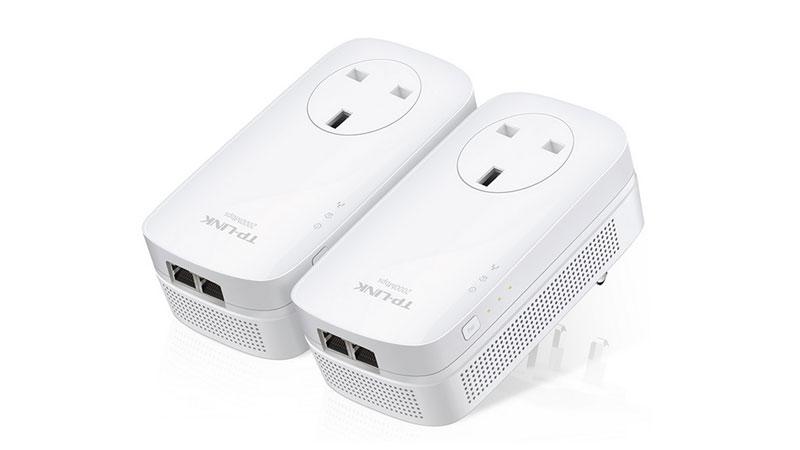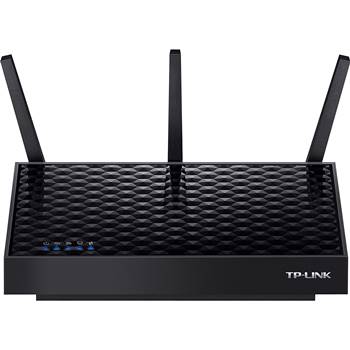Unicomp Ultra Classic Review
Pros
Superb for typing. Extraordinarily configurable. Made in America.
Cons
May require an adjustment period. Extremely loud. No special features. Unsteady plastic construction.
Bottom Line
For the hardest of hard-core typists, the Unicomp Ultra Classic pegs the quintessential PC typing experience like no other keyboard on the market.
Few tech products can truly be called legendary, but the original IBM Model M keyboard is such one thing. It was developed and released in 1985 and has been held up by many (including yours truly) as the ultimate typing device for its unparalleled responsiveness, finger feel, and sound. In fact, many companies making the mechanical imitators of the last decade have been trying to replicate it by other means, and have more or less succeeded. But if you crave the real deal, whether because you were there, because you’ve long wondered what all the fuss was about, or because you simply care that much about typing, you don’t have to troll eBay. You can, instead, go with the Unicomp Ultra Classic ($84). It’s made by the company that bought the licensing, tooling, and designs for the Model M, it could not be more authentic. And don’t be surprised if you discover, as I did, that this keyboard lives up to the hype.
Design and Functionality
The Ultra Classic looks like a plain old keyboard, which you may not find anything new. With an emphasis on the old: big (about 1.7 by 18 by 7 inches, HWD), bulky (3.18 pounds), plasticky (the deck creeks and flexes a bit if you apply too much pressure, which may not instill confidence), and utterly lacking any kind of visible frills. There are no dedicated media keys, no function key that allows the F1 through F12 keys to double as media keys, no volume adjuster, no USB pass-through, no backlighting. Two pop-out feet let you prop up the keyboard at two different angles, if you wish, but the biggest contemporary advances are the Windows and Menu keys (daring additions prime for Windows 95) and the presence of a cable terminating in a connector designed for USB rather than AT. But it’s not the externalities that are supposed to define the Ultra Classic, but rather the uncommon (if not thoroughly unique) mechanism inside.
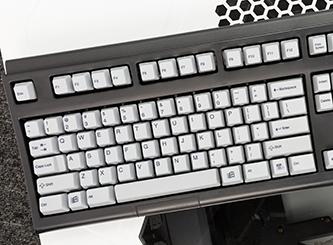
Many keyboards use silicone dome switches, which create characters from the contact that occurs when two membranes are joined when you push down on a key. Newer mechanical keyboards accomplish this instead with physical switches that can be adjusted to provide different amounts of tactile and auditory feedback, depending on the intended usage model. The Ultra Classic dispenses with any such fakery: Once you’ve applied a certain amount of pressure to a key, a hammer beneath it creates an electrical contact that registers your keystroke at the same time the spring beneath the cap buckles and hits the outer key shaft with enough force for you to hear. This design is called, quite descriptively, “buckling spring.”
This means that, unlike with even the best mechanical keyboards, the feedback you receive (to both your fingers and your ears) occurs precisely when the switch is activated. It’s for this reason that serious typists have so adored the Model M keyboard: Everything else has felt, however slightly, false and manufactured. With a keyboard like this, the relationship of the creation of characters you see to the motion of your fingers is every bit as intimate and uninterrupted as was the case during the heyday of the manual typewriter.
Unicomp sent us a version of the Ultra Classic with a black body and light-gray keys; a more staunchly traditional version, with off-white (“Pearl”) coloring for its deck and some keys and other keys in a brownish gray, is also available for the same price. For a $10 fee, you can custom design your own keyboard with any of 34 different languages and layouts (among them United States variations of Dvorak, Mac, and Linux, and blank keycaps are an option). A number of other styles—with additional terminal keys, for example, or sporting a TrackPoint-like pointing stick—can also be purchased at varying prices. No matter which you buy, all of the keyboards are made at Unicomp’s facilities in Lexington, Kentucky.
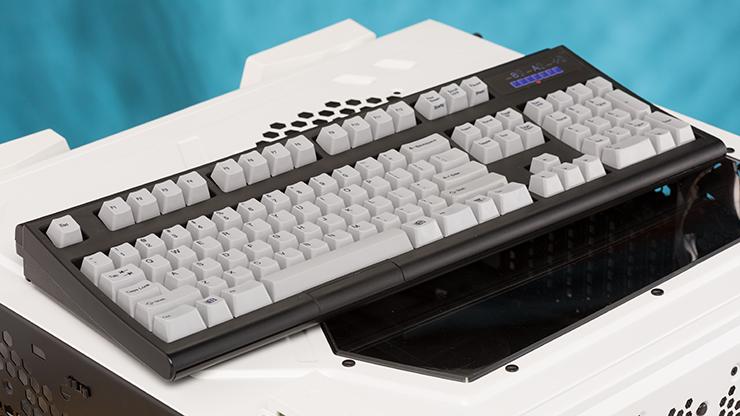
Performance
I moved from dome-switch to mechanical keyboards nine years ago, after the tragic, soft-drink-induced death of the model I’d been using for years because it was the closest I’d found that mimicked the feel (if not the sound) of the Model M keyboards that had guided me through my first forays with PCs. Since then, I’ve become very much a mechanical keyboard evangelist, willing to preach and demonstrate to anyone who will listen—and many people who won’t—exactly what they’re missing if all they know are the cheap desktop and laptop keyboards that have become so prevalent. So I thought I was prepared for what the Ultra Classic would feel like. It would be, to use a phrase that will enrage our executive editor but nonetheless applies here, a mechanical keyboard on steroids, right?
Wrong. Compared with the Cherry MX Blue, essentially the typist’s switch and the one with which I’ve most versed (it’s used in many products from mechanical keyboard company Metadot, such as our Editors’ Choice Das Keyboard 4 Professional$165.99 at Amazon), the buckling spring switch has a much higher actuation force (65 centi-Newtons, or cN, versus 50cN), a deeper actuation point (2.3mm versus 2mm), and a shallower full travel distance (3.7mm versus 4mm). This combination of factors means you can’t expect the same result if you move your fingers the same way. Though I loved how clean and real it felt to type on as soon as I started using it, at first, I found myself making unusual mistakes because the Ultra Classic just wasn’t doing what I thought it should be.
I slowly realized that my brain had given expecting a direct connection between my fingers, ears, and eyes, and was letting me phone in my typing. Once I focused on what I was doing, and made the necessary adjustments for how the buckling spring behaved, typing became thrilling and organic once again in a way it hadn’t been for years. My fingers bounced around less than they do on keyboards using Cherry MX Blue switches, but it didn’t matter that the buckling-spring keys’ activation force was even higher than that of Cherry MX Black switches (60cN, making them ideal for applications where precision trumps speed, such as gaming or medicine)—the springs provided the lift my typing needed to be comfortable, zippy, and accurate nonetheless.
Some personal preference comes into play here, of course, as the Cherry MX Blue switches seem more effortless to use, and if you’re accustomed to them, you’ll need a couple of weeks or so to transition to buckling-spring switches. But others in our office who have not previously displayed any keyboard-snob tendencies, including our staff photographer and two editors at Computer Shopper, tried it and were captivated by its natural feel, too. The difference really is one you can detect immediately, even if you’ve never thought about it before.
The only potential downside? Even more than super-clicky Cherry MX Blue, buckling-spring key switches are loud. They also have a much deeper, baritonal sound—think of Cherry MX Blue switches like professional tap dancers, and buckling-spring switches are sumo wrestlers in training. When used for long periods of time by a fast typist (like, uh, me), the Ultra Classic produces a constant “ka-thunking” that could be distracting or irritating to coworkers or significant others. Hopefully they’ll understand, but maybe warn them first.
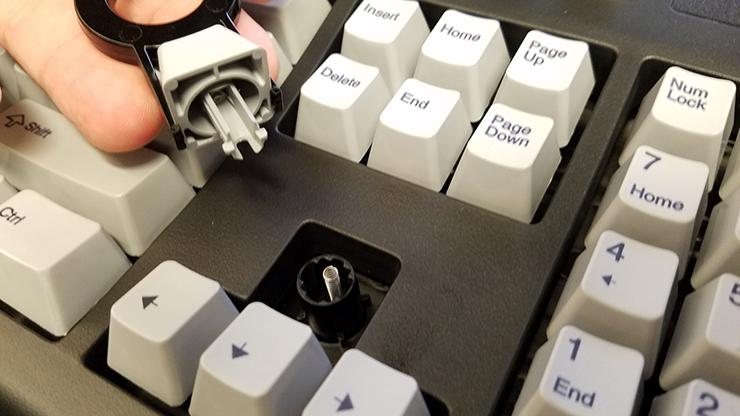
Conclusions
The Unicomp Ultra Classic earns its name: It really is every bit as good as the IBM Model M keyboard it’s been designed to so closely emulate. True die-hards have kept those keyboards for decades, and that there are many reports of them still working as well as they did when they first came out of the box is a tribute to their timeless construction. I can’t say for sure that the Ultra Classic will enjoy that kind of longevity, but I do know that you’re unlikely to find a keyboard that’s much better for typing than this one. The Das Keyboard 4 Professional combines terrific typing with standalone media keys and even a volume wheel, but it costs twice as much as the Ultra Classic. And any gaming keyboard, whether one as basic as the SteelSeries Apex M500$96.99 at Amazon or as fully decked-out Corsair K95 RGB$169.99 at Amazon, will offer a lot more functionality but an inferior typing experience. With an unadventurous design and an impressive lack of post-1995 features, the Ultra Classic can’t do anything but type, but at that it excels. If that’s what you need, and if those around you are tolerant of sound or have exceptional headphones, the Ultra Classic delivers it as few other keyboards are, and have ever been, capable of.
